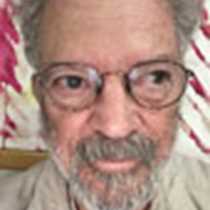Nordfjord, Melfjord, Norway
For a number of days now we have been traveling southward. Night comes earlier and lasts longer. The vegetation gets taller, from tundra, to scrub, to dwarf forest, to trees. Picturesque houses, some with great, green lawns are scattered on islands and at the ends of fjords. But it was only this morning that we finally reached the Arctic Circle.
Even after all these years of traveling through Norway, I continue to be amazed at how un-polar it is, almost temperate, far to the north along the coast. The amazing part is that Norway’s maritime climate is moderated, warmed in the same way that people warm up a swimming pool on the cheap. Pump water from the pool through a hose to somewhere relatively warm, like a roof facing the sun, loop the hose many times to increase the travel time and heat absorbed, then back to the pool. Here, the pool is coastal Norway and the roof is the Gulf of Mexico. The effectiveness of this solar heater can be appreciated by comparing where we are today at the Arctic Circle to the Antarctic Peninsula at the Antarctic Circle where there are no trees, no grass, no cute houses, no berries, no songbirds, just rock and ice for the most part, and the water is more than 20 degrees cooler!
Before breakfast we were in the Melfjord, a large fjord-system with a number of tributaries, or arms. We went to the end of one, Nordfjord, just inside Svatisen, a national park. Hikes were offered after breakfast. There are no paths but it was possible to walk along the river’s edge and climb up above the open forest. Zodiac tours of the dramatic fjord were also offered.
We, however, explored the bottom of the fjord. ‘We’ being myself, Magnus the baker, and Chris, the provision master. The bottom of the fjord was under almost 400 feet of water, so we ‘flew’ the robot down, the ROV, or remotely operated vehicle. We deploy the ROV from a Zodiac. There are a number of components in a typical ROV operation. There is the ROV itself, about 50 pounds, the size of a nice ottoman footstool. Then, in a dark and dry pilot ‘box’ there is a control console with a monitor and recorder that connects to the ROV through several hundred feet of cable that transmits power, video signal and commands. There needs to be a person managing the cable, a person keeping the Zodiac on site and an ROV pilot. The ROV pilot sits in the pilot box and looks out through the ROV’s ‘eye’, the camera head. Four thrusters are controlled with two joysticks. Under the pilot is a small generator to provide power for everything.
Inner fjords tend to have soft bottoms where silt and organic debris accumulate in the quiet water. Even the edges of the below-water fjords are usually soft unless they are shear cliffs. Soft bottoms mean less biodiversity and most of those organisms are buried. However when there is exposed rock there can be an abundance of life on its surface and in its crevices and caves.




